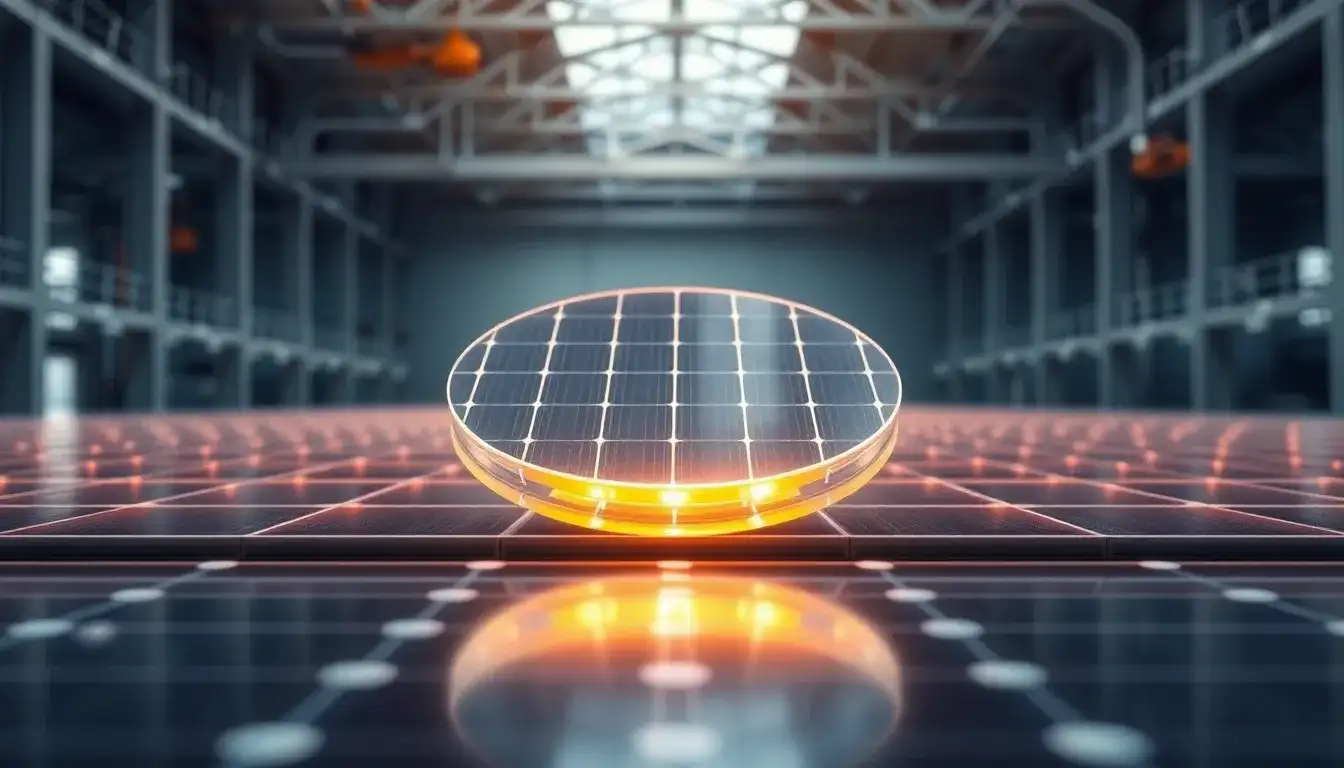
On the evening of April 10, Trina Solar Limited announced via its official WeChat account that its photovoltaic scientific and technological laboratory has achieved a new record in the field of perovskite crystalline silicon tandem technology. The company’s self-developed 210mm large-area perovskite/crystalline silicon tandem solar cells have achieved a maximum efficiency of 31.1%, according to independent certification from the Fraunhofer Institute for Solar Energy Systems in Germany. This breakthrough not only sets a new world record for large-area tandem solar cell efficiency but also marks the first time that a 210mm industrial-sized solar cell has surpassed the 31% efficiency threshold. This achievement represents the 32nd time Trina Solar has created or updated a world record, indicating comprehensive advancements in both cell efficiency and module power within the perovskite crystalline silicon tandem technology sector.
The theoretical efficiency limit of 30% is considered a barrier for crystalline silicon materials, while perovskite tandem technology can surpass the physical efficiency limits of single-junction cells, with theoretical efficiencies potentially exceeding 43%. This recent advancement in tandem cell technology is seen as a pivotal step toward a new phase of development. Gao Jifan, Chairman and CEO of Trina Solar, who is also the director of the national key laboratory for photovoltaic science and technology, expressed confidence in achieving further technological breakthroughs in the future, aiming to lead the photovoltaic industry from the crystalline silicon era to the perovskite tandem technology era.
Market analysts have reacted positively to Trina Solar’s innovative breakthrough. Bu Yili, a researcher at Shenzhen Qianhai Paipai Network Fund Sales Co., Ltd., stated in an interview that this technological advancement will significantly enhance the efficiency of the photovoltaic industry and open new pathways for industrial development. Such progress is crucial for promoting high-quality growth in the photovoltaic sector and optimizing its structure. For Trina Solar, this innovation further solidifies its position as a leading player in the industry and boosts its product competitiveness.
Since 2014, Trina Solar has been actively investing in perovskite tandem technology, accumulating a total of 331 patent applications in this field. Recently, the company reached an exclusive patent licensing agreement with Oxford Photovoltaics Ltd., a global leader in perovskite/crystalline silicon solar cell technology, marking a significant advancement in the commercialization of this technology.
Since 2025, driven by several leading companies, China’s photovoltaic industry has repeatedly achieved breakthroughs in technological innovation. On April 11, it was reported that LONGi Green Energy Technology Co., Ltd. achieved a conversion efficiency of 27.81% for its self-developed HIBC silicon cells, setting a new world record for HIBC silicon cell efficiency. In March, Tongwei Co., Ltd.’s global innovation R&D center also set a new record for heterojunction component power for the eighth time with its THC210 high-efficiency heterojunction component.
Huo Hongyi, founder of Numandala Business Strategy Consulting, noted that the photovoltaic industry is at a turning point, transitioning from rapid growth to high-quality development. The prosperity of the photovoltaic industry in recent years has largely resulted from two forces: a surge in installations driven by policy incentives and cost reductions due to technological advancements. Although the industry currently faces pressures from a temporary imbalance in supply and demand, the long-term development trend remains positive, with technological innovation as one of the key factors driving overall improvement in the photovoltaic sector. “On one hand, the photovoltaic industry is evolving from components to ‘light-storage integration.’ Leading companies with R&D capabilities and process integration abilities are likely to navigate through cycles successfully. On the other hand, the previous logic of ‘who runs faster wins’ is being replaced by ‘who is more stable and can survive,'” Huo remarked.







